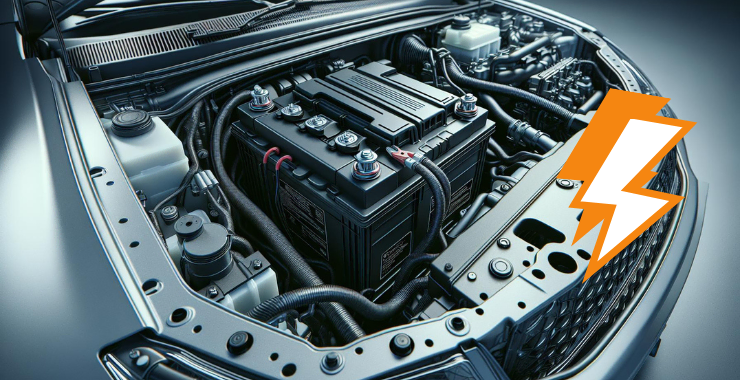A typical 12V car battery has a capacity ranging from 35 to 75 amp-hours (Ah) or more, depending on the vehicle and battery size, which equates to 420 to 900 watt-hours (Wh) or more. The wattage of a car battery can be calculated by multiplying the voltage(V) by the amp-hours (Ah).
Key takeaways:
Car battery capacity ranges widely, typically 420-900 watt-hours or more
Wattage equals voltage multiplied by amp-hour rating, affected by operating conditions
Optimized for delivering very high starting currents, not long energy storage
Standby time highly variable based on battery health, parasitic loads, temperature
Understanding Car Battery Voltage and Amp-Hours
Most car batteries are 12V, comprising six 2V lead-acid cells connected in series. Amp-hours (Ah) measure the battery’s total charge capacity over a 20-hour discharge period. For example, a 48Ah battery discharged at 2.4 amps should last 20 hours. In practice, discharging at higher rates results in lower effective capacity.
Amp-hours represent the amount of electric charge stored in the battery, similar to the size of a fuel tank. Voltage is the electrical potential that pushes current through a circuit, like the pressure from a fuel pump. Together, they determine the battery’s energy storage and power output capabilities.
While a fully charged 12V battery measures 12.6-12.8V at rest, during charging it can reach 13.7-14.7V with modern battery management systems preventing overcharge.

Calculating Car Battery Wattage
- Watts = Volts x Amps
- Watt-hours (Wh) = Voltage (V) x Amp-hours (Ah)
- Example: 12V 60Ah battery has 720 Wh capacity (12 x 60 = 720)
Depending on capacity, typical car batteries range from 420 to 900 watt-hours or more. By using these calculations, we can determine the wattage of any car battery given its voltage and amp-hour rating.
Factors Affecting Car Battery Wattage
- State of charge: Voltage drops as the battery is discharged
- Temperature: Colder temperatures reduce capacity and voltage
- Age and condition: Older batteries have reduced capacity and higher internal resistance
- Discharge rate: Faster discharge reduces effective amp-hour capacity
These key factors affect the battery’s available wattage and usable power output. A fully charged battery at optimal temperature will maximize cold cranking amps. However, the lower voltage also cuts into overall wattage at lower states of charge and temperature.
Car Battery Power Output and Energy Storage
- Car batteries provide very high discharge currents for short durations to start engines
- This pulsed power output comes from thin lead plates with increased surface area
- Car batteries sacrifice energy density to achieve a high power density
Car batteries deliberately trade off energy storage capacity for extremely high short-term power delivery, capable of supplying over 500 amps to crank an engine.
How Long Can a Car Battery Last Without Driving?
- A car battery’s wattage and capacity affect standby time without charging
- Parasitic drains, temperature, and the battery’s age and condition all impact longevity
- Estimates vary widely from a few weeks to several months
- Regular driving helps maintain charge, but modern vehicles prevent overcharging
While an average-quality 12V 48Ah battery stored at optimal temperature may last 2-3 weeks, a high-capacity, new battery could last for months. Individual power consumption, operating conditions, and other factors create wide variability in real-world standby time scenarios. Finding the balance between maintaining charge and preventing overcharge is essential to maximizing service life.
Conclusion
The precise wattage of a car battery varies by capacity and operating conditions but is calculated by multiplying voltage and amp-hours. Car batteries favour very high short-term power density rather than long energy storage. Estimating real-world standby times accounting for multiple factors can be challenging. Regular vehicle use and modern charging systems help provide ideal storage conditions. Understanding battery wattage and capacity metrics provides crucial insight into performance capabilities.
